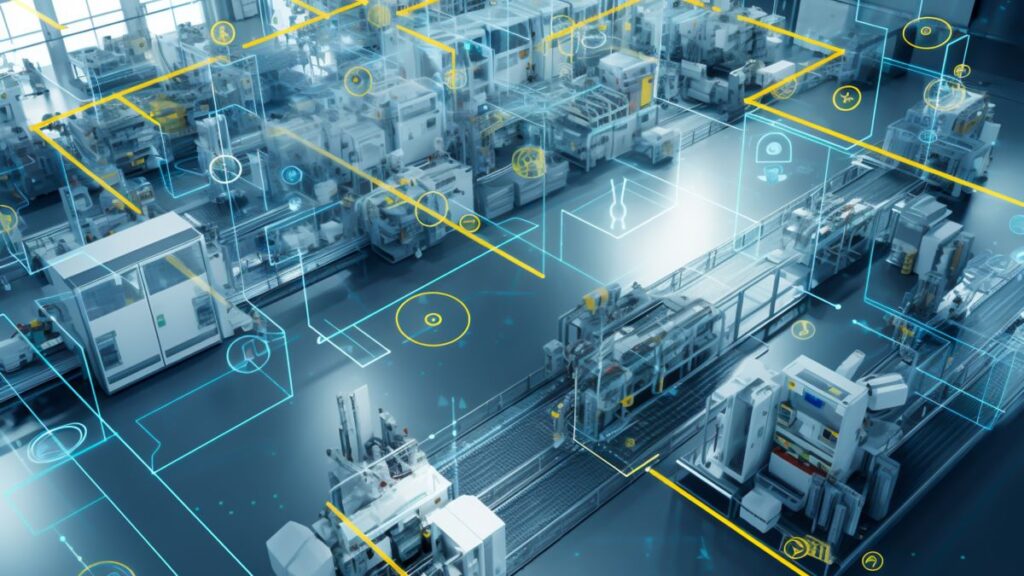As a CIO, I am focused on how artificial intelligence (AI) can help my manufacturing company succeed while also staying aware of the potential risks that must be mitigated. In this analysis, I’ll dive into AI’s opportunities and risks, defining them and giving examples of how they might impact manufacturing companies.
Opportunities Presented by AI in Manufacturing
Opportunities presented by AI include increased efficiency and productivity, enhanced quality control, and predictive maintenance. Let’s take a look at what those might look like in closer detail below.
Increased Efficiency and Productivity
Detail: AI-driven tools and systems can analyze vast amounts of data from processes to identify inefficiencies and optimize operations.
Example: My company could implement these types of AI tools to streamline our production line by forecasting demand, adjusting production schedules, managing inventory levels, and optimizing supply chain logistics. By integrating AI with our existing IoT (Internet of Things) infrastructure, we could analyze data from various stages of the manufacturing process. This analysis could help identify bottlenecks and inefficiencies, leading to a redesigned workflow.
Enhanced Quality Control
Detail: In the manufacturing sector, maintaining high-quality standards is crucial. AI algorithms excel at analyzing images, videos, and sensor data in real-time to detect anomalies, defects, or deviations from expected standards. This capability allows for immediate corrections and reduces the need for manual inspections, ensuring that products meet quality standards consistently.
Example: We might use AI-powered vision systems to inspect our product for defects. These systems analyze thousands of images per minute, much faster and more accurately than human inspectors could. When the AI system identifies a defect, it could automatically flag the product for review or removal from the production line, significantly reducing the risk of defective products reaching the market and maintaining our reputation for high quality.
Predictive Maintenance
Detail: Predictive maintenance utilizes AI to anticipate equipment failures before they occur, enabling proactive maintenance and repairs. By analyzing data from sensors on machinery (like vibration, temperature, and sound), AI models can detect patterns indicative of wear or impending failure. This foresight allows manufacturers to schedule maintenance during non-peak times, minimizing downtime and extending the lifespan of their equipment.
Example: We could use AI to monitor assembly line robots. The AI system would analyze historical and real-time data from the units to predict potential failures. When the system detects an anomaly suggesting a part is likely to fail, it can alert the maintenance team to inspect and possibly replace the part before it fails, helping to extend the lifespan and reduce downtime.
Ask Cloud Wars AI Agent about this analysis
Risks Associated with AI in Manufacturing
Here are the types of threats to keep an eye out for, along with possible mitigation strategies.
Cybersecurity Threats
Detail: As manufacturing processes become more connected, the risk of cyber-attacks increases, potentially compromising sensitive data and operational integrity. It could be devastating for a company like mine to be hit with a breach that causes production systems to be shut down or, even worse, causes an accident or injury to workers.
Mitigation: Implementing state-of-the-art cybersecurity offerings to protect against data breaches and cyber-attacks. We must pay special attention to what we call OT (operational tech) in addition to IT (information tech) when establishing cybersecurity controls.
Data Privacy Concerns
Detail: AI involves handling vast amounts of data, raising concerns about data privacy and protection. As we begin to expand our area of operations, especially when it extends into other countries, regulations surrounding data privacy must be adhered to. The interconnected nature of AI adds a level of complexity to the handling of data in these jurisdictions.
Mitigation: Establishing transparent data usage policies on data collection, usage, and privacy to maintain trust and comply with regulations.
Dependency on Technology
Detail: Over-reliance on AI systems could make companies vulnerable to system failures or malfunctions. If you’ve ever been at a store or other business and their computer system fails, you know what it’s like when nothing can continue as long as the system is down. The same is true for manufacturing. If your systems are heavily reliant on AI, that may mean they are dependent upon staying connected to the Internet. A backhoe accident that severs a fiber uplink could shut down manufacturing operations for an extended time.
Mitigation: Designing AI systems with redundancies and the ability to revert to manual operation to reduce dependency risks.
Conclusion
There is much to consider when planning an AI strategy for a manufacturing company. A balanced approach, focusing on leveraging opportunities while mitigating risks, is crucial for harnessing the full potential of AI.
Editors’ Note: This analysis is the first in a two-part series. The second part, coming soon, will cover non-technical business leaders’ perspectives on AI.











